 home
about
artists
exhibitions
press
contact
purchase
home
about
artists
exhibitions
press
contact
purchase |
||||||||
|
artist
return
His own original method of painting — the mixed technique with use of oil, tempera, acrylic, watercolours, is skilfully supplemented by masterly application of an "air brush" and the finest glazing by transparent paints. The artist Stanislav Plutenko plays on colour contrasts, his painting is very vigorous, illustrative and imbued through by sarcasm on the reality. In spite of the fact that the characters of his pictures are fattened and absolutely earthly ones, they are always astir - running, fluttering and flying somewhere. Having awkward bodies and unprepossessing faces they feel themselves angels and we are sympathetic towards them with their naiveté. With an identical acuteness he presents images of the people and visual psychological surroundings. In each genre stage with elements of grotesque style we can find the small history of life with symbolical underlying theme. His pictures stimulate in the spectators the scale of feelings, down to the protest, but not the indifference … Stanislav Plutenko was born in 1961 in Moscow. He drew and painted through childhood, but with parents who disapproved of his being a painter, studied in the turbine construction department of Moscow Machine Construction Institute. After army service, where he was appointed painter in the Officers Club and met many other painters, he became a designer. He studied at the Academy of the National Economy named after M.Plekhanov and at the same time took private art lessons from the art masters of different work style. Since 1981 he worked as a show-window dresser, continuing to study painting in art studios. Since 1984 he has participated in exhibitions. In 1988 he worked with «Arbat 48», «Arbat 34», and «Mars» galleries. Since 1991 he has been a member of the Professional Graphic-Artists’ Union. In 1997 he was rewarded with Grand Prix of the «Golden Brush» exhibition. His work has been most recently seen in Britain in a one-man show at the Institute of Contemporary Arts (ICA) in London, 1996. TimeOut advertised the exhibition: In 2007 Stanislav Plutenko has received a rank of International Academy of Creative Endeavours. In 2008 he was awarded with an Order of 'Peter The Great' for "his deserts in the development of Russian Culture and Arts". In 2009 he was awarded by a Gold Medal named after N.Sats "for the outstanding creative achievements in the art development". The artist’s signature method is a mixed technique employing oil, tempera, acrylic, watercolour, and is skilfully supplemented with masterly airbrushing and finest glazing with clear paints.
Plutenko's work has been shown many times over the last years, including the exhibitions in Moscow (from 1988), Stockholm and Helsinki at Interart 89 (1989), Chicago, USA (1990), Ulm, Germany (1991), London, UK (1996).
2019 HELIKON–OPERA, Moscow, Russia 2017 East West Fine Art Gallery, Naples, USA
2013 Henley Festival by
Hay Hill Gallery, Henley On Thames, UK 2002-2012 Hay Hill Gallery, London, UK 2011 The Central House of Artists supported by the Gallery “Vizit”, Moscow, Russia 2009 “ARTMANEG”, Manezh, Moscow, Russia 2008-2009 Gallery «Graal», 174 Bd de la République, Agen, France 2007 “ARTMANEG”, Manezh, Moscow, Russia 2006 The Biannual Forum of Contemporary Art ‘Art Miami’, Miami, USA 2005 ‘ARTMANEG', Manezh, Moscow, Russia 2005 The Central House of Artists supported by the Gallery “Vizit”, Moscow, Russia 2005 ‘Extravaganza Moscow 05’, Radisson Slavyanskaya Hotel, Moscow 2004 The Central House of Artists, Moscow, Russia 2003 “Golden Brush” competition, Maliy Manezh, Moscow, Russia 2003 Radisson Slavyanskaya Hotel, Moscow, Russia
2003 Museum of
Contemporary Art, Madrid, Spain 2001 Gallery "Visit", Moscow, Russia 2000-2001 «Medici Haus» Zurich, Switzerland 1999-2000 Aspire Gallery, Moscow, Russia 1999 Moscow International Art Salon «CHA-99», Moscow, Russia 1998 Moscow International Art Salon «CHA-98», Moscow, Russia 1998 «Albatros» gallery, Moscow, Russia 1997 "Golden Brush". The Central House of Artists (CHA), Moscow, Russia 1996 Institute of Contemporary Arts, "ICA" Mall, London, UK 1992 "Golden Brush". The Central House of Artists (CHA), Moscow, Russia 1992 Exhibition in the Artists’ Union’s Central Salon, Ukrainsky Boulevard, Moscow, Russia 1991 «Gallery + Keramuk Baltiya» Ulm Donau, Germany 1989 «Art Russia», Helsinki, Finland 1989 «Seppe Gallery», Stockholm
RUSSIAN art has flourished in the heady atmosphere of freedom since the end of the communist era. Now a pair of amateur enthusiasts have beaten professional art dealers at their own game by bringing an exciting new talent to the attention of the West. The powerful works of Stanislav Plutenko went on sale in the West End of London last Thursday. The mainly British buyers of the paintings by Plutenko, 35, a fast-rising Russian artist with no specialist training who started his working life designing turbines, had a remarkable coup to celebrate. The coup's roots are in the early 1990s when Russia began to loom large in the careers of Alan Hendrickson and Geoffrey Roughton, who are businessmen, scientists and art collectors. The privately sponsored show of Plutenko's works at the Institute of Contemporary Arts (ICA), The Mall, was their idea. They had set up a successful software business in Moscow which entailed monthly visits to the Russian capital, but as the business grew it made vastly greater demands on the time of Hendrickson and his colleagues. Luckily, there was still time for art. The two partners "discovered" Plutenko's works in a gallery named Arbat-34, in a district of Moscow where art, craft and antique shops proliferate, and immediately bought the three paintings by him on offer there. "I bought them because I liked them, but I must admit I also thought the day might come when I would make a profit on them," says American-born Hendrickson, who enthusiastically changed his nationality as a gesture to Britain which gave him the opportunity to make his first million. On subsequent visits to Moscow, Hendrickson and Roughton found themselves in keen competition with several other western private collectors who had also discovered Plutenko's work. The artist had one-man shows in Stockholm, Helsinki, Ulm in Germany, other exhibitions in Russia and at private galleries in America. His paintings invariably sold as quickly as they came off the easel, and the partners often arrived at the gallery in Moscow only to find there was nothing available. They eventually resorted to paying the gallery owner a "sight-unseen" reservation fee, and over three years managed to build up a small collection of Plutenko's paintings. In 1995 Hendrickson and Roughton were able to meet Plutenko, suggested the idea of a one-man show in London and offered to finance it on a private basis. The painter agreed and reserved his output for the next year as the basis of the show (which runs at the ICA until October 1). All the 42 works on exhibition are for sale, with a mixture of owners; prices vary considerably, from Pounds 2,000 to Pounds 12,500. Hendrickson certainly cannot be accused of setting his sights too low: his posters for the event refer to "the first London show of works by Russia's leading contemporary artist". Ever a realist, Hendrickson knows that many thousands of pounds in expenses - commitments to the artist, gallery staffing, publicity, framing and so on - have to be accounted for before a penny of profit comes the organisers' way. The Plutenko oeuvre is a portfolio of glossy, magical fantasy by an artist who knows he can call for attention by means of his bizarre images that sometimes suggest Dali, and then by the sheer power of drawing and painting technique. You get a lot for your money. Meanwhile back at the dacha, Russian dealers are reported to be spending much more time and effort on home ground in Moscow and St Petersburg. This is believed to reflect the increasing confidence of an expanding group of Russian collectors who try to impress their colleagues with the symbols of success: the houses, cars, holidays in the West - and paintings such as glitzy 19th and 20th century works by Aivazovsk, Repin, Chepik and Shishkin: from a few thousand pounds to Pounds 150,000. James Butterwick, a well-travelled British dealer, said in Moscow: "People now realise that the market is here and prices are now almost on a level with those in the West." In Britain the weekly Antiques Trade Gazette quoted a Russian banker at Sotheby's Russian auction last December. Asked why he had bought one particular portrait, the banker replied: "Because it was expensive."
http://eastwestfineart.com/artist/stanislav-plutenko/
He continues, “Inspiration comes like a hallucination or a vivid dream that only children have. With time, these dreams become bleaker, fainter, and disappear. First, I feel nostalgic, then the artistic drive takes over, I dissolve into the canvas, losing all track of time.” “Cock Fight” is a representative example, recording Plutenko’s observations from India, Pakistan, and the Middle East. As he draws upon his love of Orientalism, we find an energetic group of men who crowd around a pair of cocks, their feathers raised in powerful, aggressive fashion. Despite the painting’s subject, the painting is — in fact — an intense study of emotion, individuality, culture, and expression. Plutenko writes, “This painting is an illustration of human passions and the human character. There are mixed emotions in this work — the excitement of the approaching victory, greed, cruelty, and disappointment. So many emotions at the same time — a treasure trove for genre painting.” Indeed, each onlooker is treated with astonishing sensitivity, their expressions, gestures, individuality, and emotions captured with clarity. The captivating composition and attention to each character recall the traditional works of Baroque masters and has a timeless quality. “Christ in the Desert” is a fantastic modern reinterpretation of a traditional artistic theme. Sitting at center among piles of rubbish and debris, a weary Christ appears in worn white and green robes. Christ does not engage the viewer, but gazes downward with a saddened expression. “This painting is how I see the second coming of Christ,” writes the artist. “War and urbanizations have ravaged the land, physically and spiritually. Who should be saved? Who will listen to the truth?” Especially fascinating is how open Plutenko is to his artistic communication, describing himself like a chef who has several key ingredients or spices at his disposal. He writes, “I am like a chef who has several spices (themes) in my arsenal — Romanticism and sugar, Surrealism and salt, Orientalism and spice, the grotesque and hot peppers. I mix everything and hope to nourish the world with the ‘soup.’” Indeed, Surrealism comes to the fore in works like “Tree-Cloud,” which recalls the famous poetic tale The Little Prince by French poet Antonie de Saint-Exupéry. The painting here shows an otherworldly escape in the clouds. Plutenko describes, “‘Tree-Cloud’ is my escape from the big world into a tiny, quiet and cozy world.” In the future, Plutenko wants to continue pushing his artistic boundaries and working in a variety of mediums. “There are times that I wish to get away from the usual subject matter and paint a series of works that are uncharacteristic of my usual style,” he asserts. “Maybe someday I will do something under a pseudonym!” Plutenko is currently represented through a number of galleries and private collections in the United Kingdom, Germany, Canada, Monaco, Finland, France, Switzerland, and the United States at Gallery on Fifth in Naples, Florida. Andrew Webster, Editor, Fine Art Today Catalogue (flash) Catalogues (html): catalogue 1 catalogue 2 catalogue 3 catalogue 4 catalogue 5 catalogue 6 catalogue 7 |
||||||||
|
|
E-mail: info@hayhillgallery.com |
|||||||
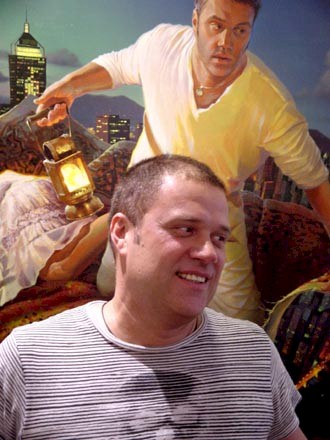 The
artist Stanislav Plutenko from Moscow was introduced already to the
British public in 1996. Then in October 2002 the Hay Hill Gallery
organised his second in the UK exhibition. Considering the great
popularity of his paintings the Hay Hill Gallery continues to present his
new work to the British public.
The
artist Stanislav Plutenko from Moscow was introduced already to the
British public in 1996. Then in October 2002 the Hay Hill Gallery
organised his second in the UK exhibition. Considering the great
popularity of his paintings the Hay Hill Gallery continues to present his
new work to the British public.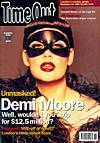

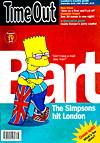

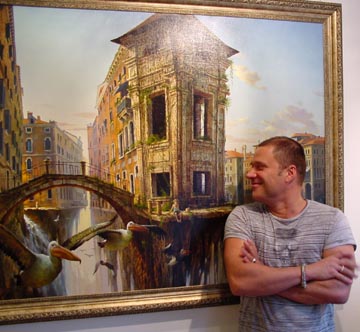 Exhibitions:
Exhibitions: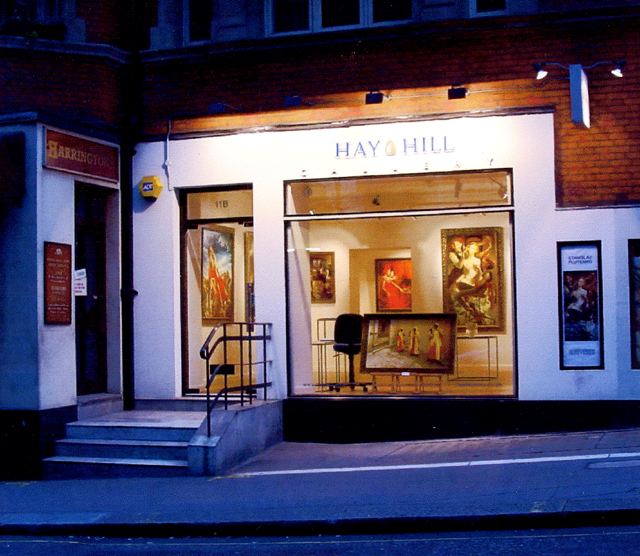
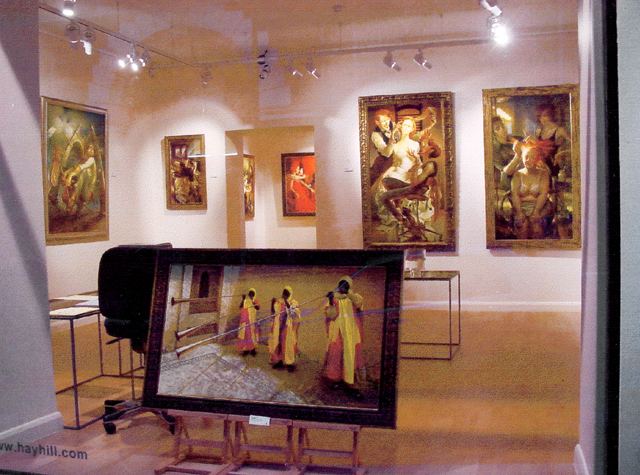
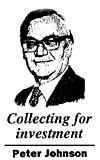 The Sunday Times,
8 September 1996, Page 11 Money
The Sunday Times,
8 September 1996, Page 11 Money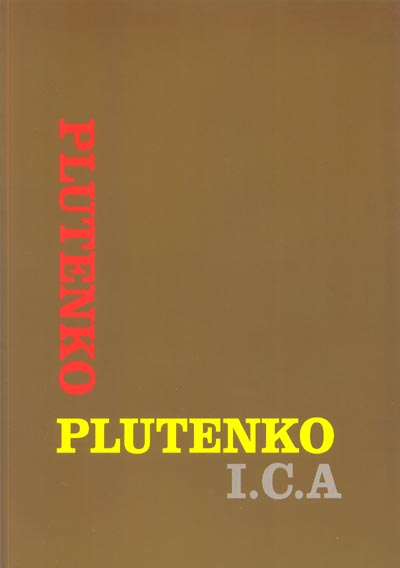
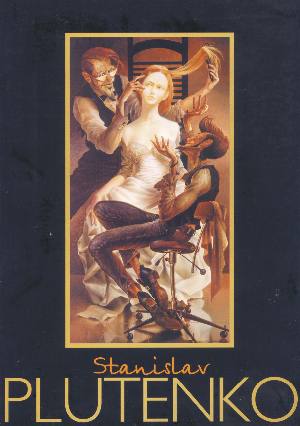
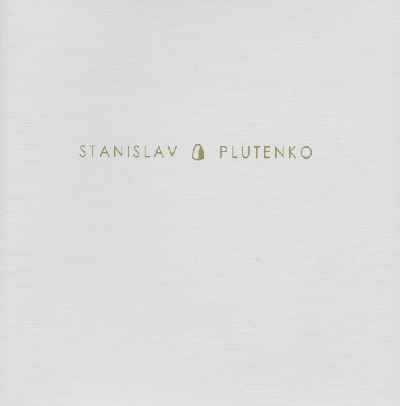
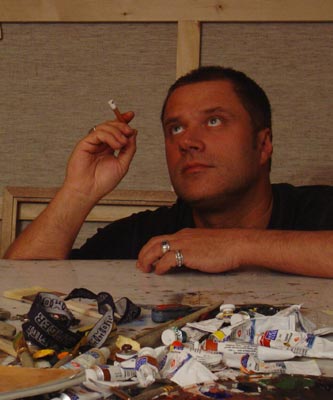 Like a rush of blood to the head,
inspiration for his next painting overwhelms Moscow realist
Stanislav Plutenko with authority — and the artist must
act quickly to record his visions before they fade. “At times
when I look at the snow-white canvas in front of me, I see
obscure images and my mind tries to freeze the moment and not
lose any of those feelings or visions,” he writes. “I try to
complete and develop these visions in order to transmit the
fragile world that I see onto the canvas.” For Plutenko, this
fragile world, experienced during his travels abroad to Asia,
the Middle East, and India, are focused and reinterpreted
artistically.
Like a rush of blood to the head,
inspiration for his next painting overwhelms Moscow realist
Stanislav Plutenko with authority — and the artist must
act quickly to record his visions before they fade. “At times
when I look at the snow-white canvas in front of me, I see
obscure images and my mind tries to freeze the moment and not
lose any of those feelings or visions,” he writes. “I try to
complete and develop these visions in order to transmit the
fragile world that I see onto the canvas.” For Plutenko, this
fragile world, experienced during his travels abroad to Asia,
the Middle East, and India, are focused and reinterpreted
artistically.